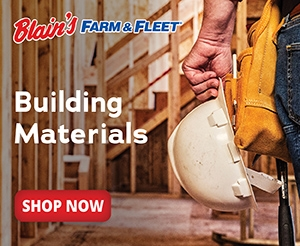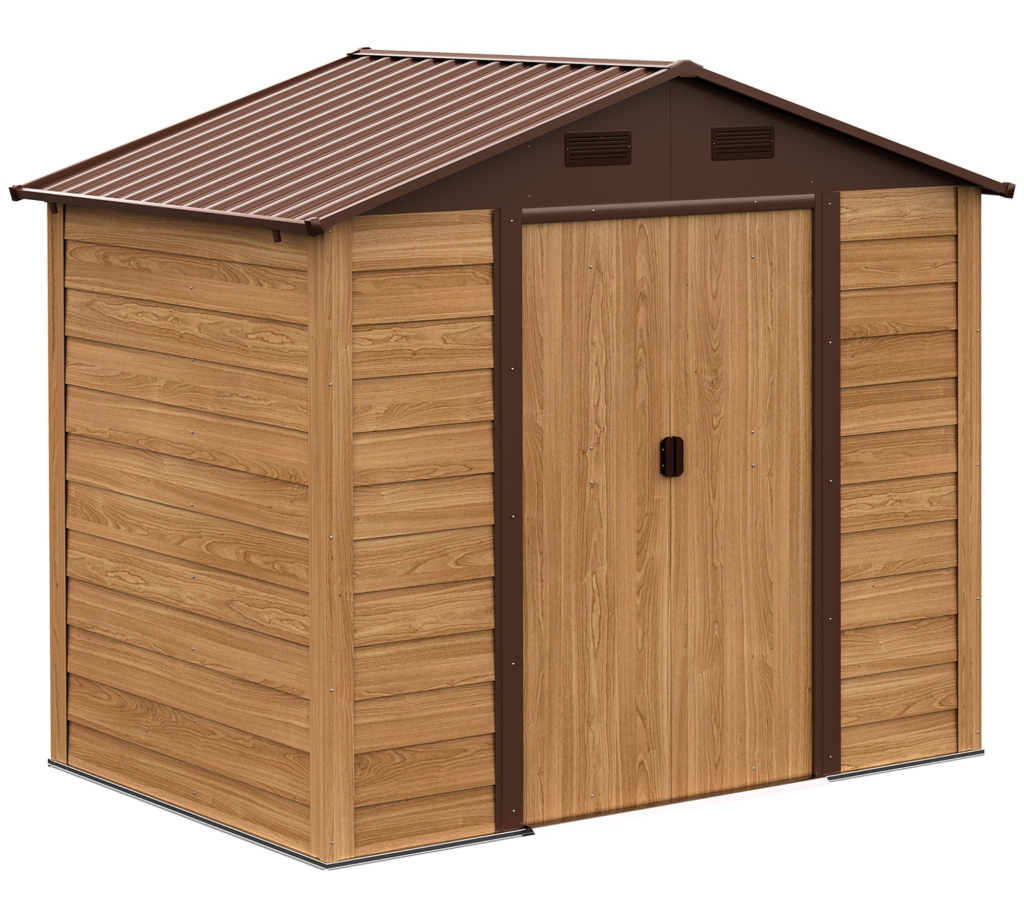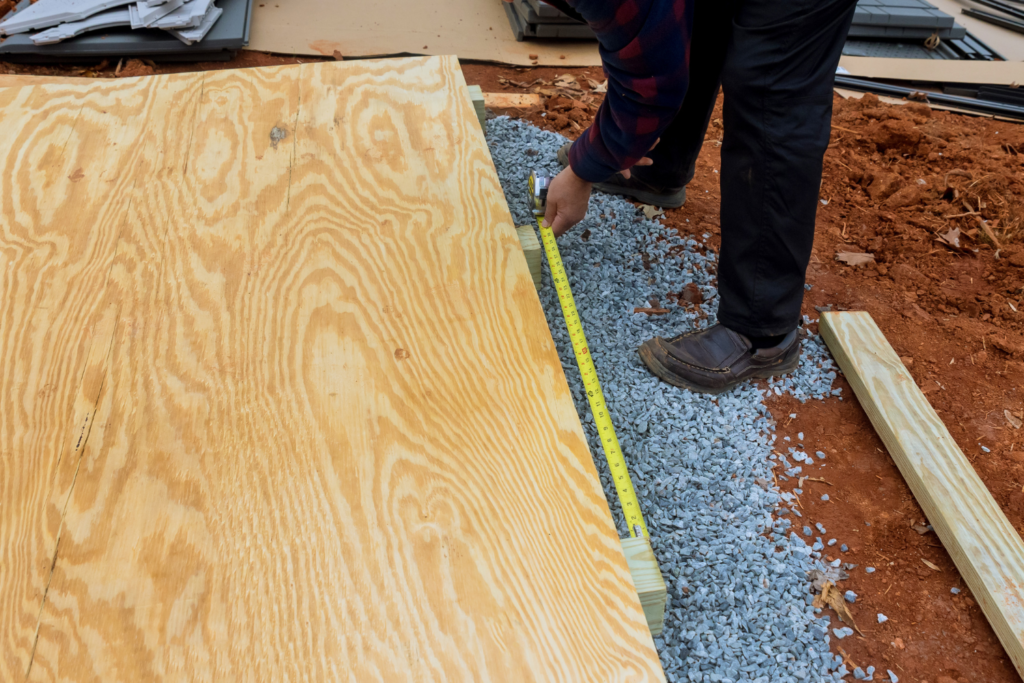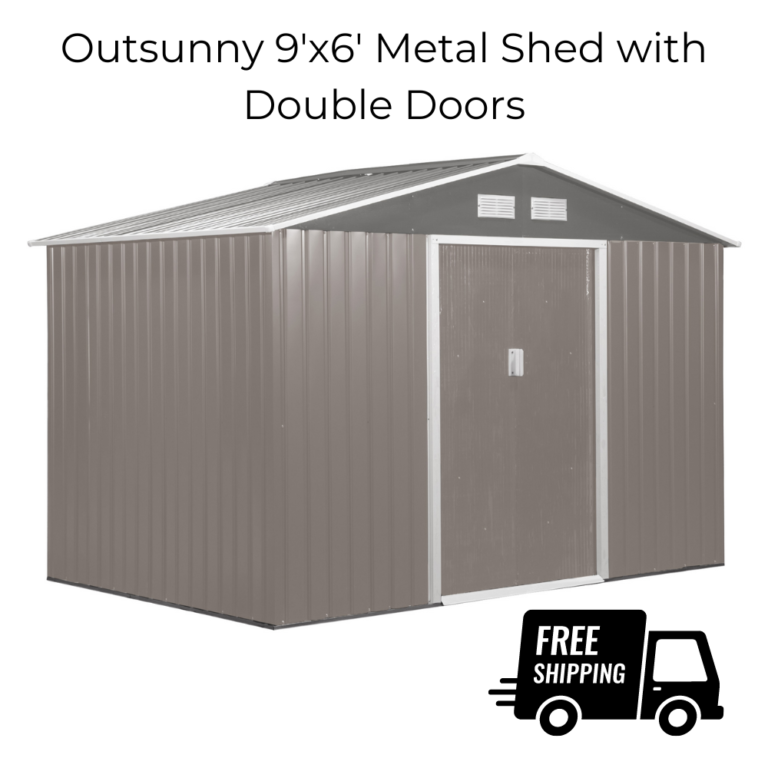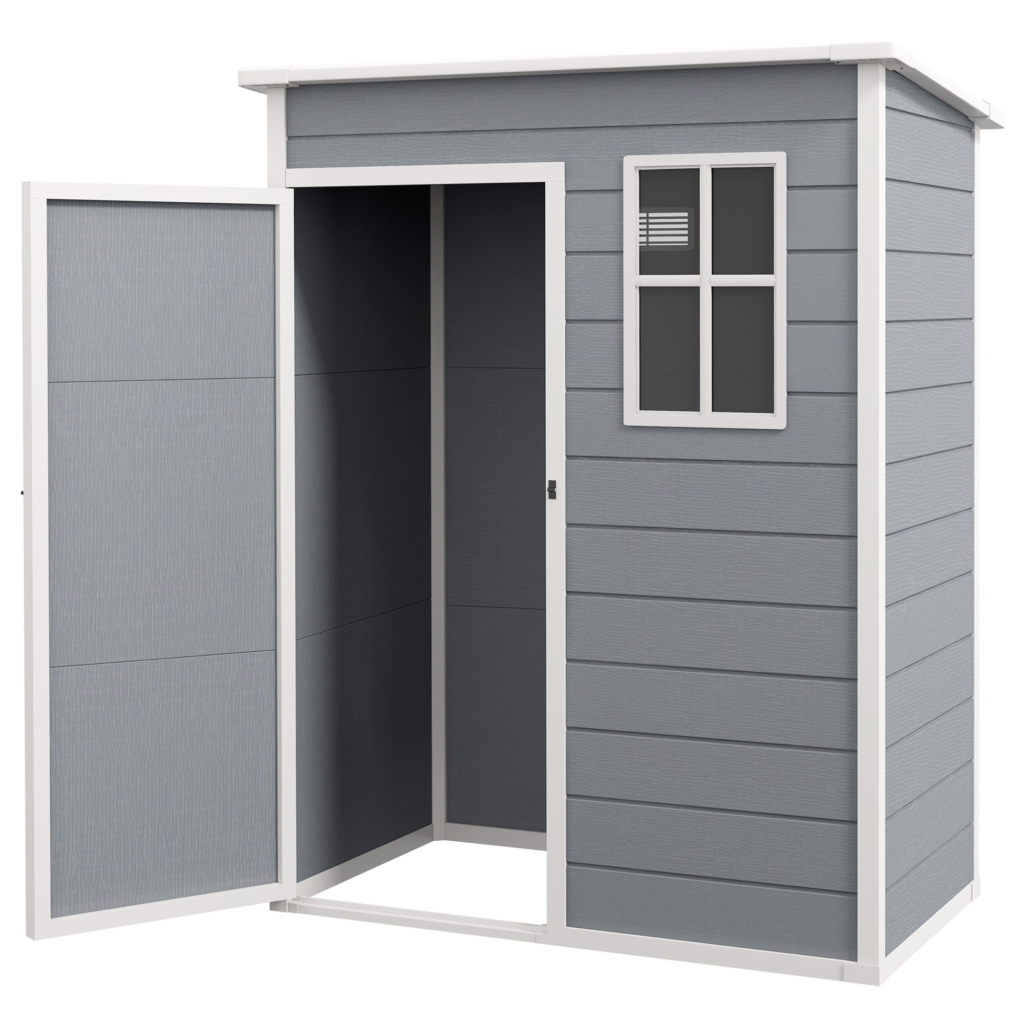
This post may contain affiliate links. As an affiliate, we earn from qualifying purchases. But we only recommend products we would use ourselves. View our Disclosure Policy here.
Choosing the Right Base Material for Your Backyard Oasis
Installing a shed in your backyard can be an exciting project, offering valuable storage space and enhancing the functionality of your outdoor area. However, one crucial aspect often overlooked is the choice of base material on which the shed will sit. The foundation serves as the structural support, ensuring the stability and longevity of the shed. In this comprehensive guide, we’ll explore various base materials for shed installation, outlining their pros and cons to help you make an informed decision.
1. Concrete slabs
Concrete slabs stand as stalwart foundations for sheds, boasting unparalleled durability and stability. Below, we delve deeper into the merits and drawbacks of this popular choice:
Pros:
- Exceptional Durability: Concrete is renowned for its resilience against various elements, including moisture, rot, and pests, ensuring the structural integrity of your shed for decades to come.
- Superior Stability: A meticulously poured concrete slab provides an impeccably level and steadfast surface, crucial for the structural stability and longevity of your shed, regardless of the terrain.
- Minimal Maintenance: Once set, a concrete foundation demands little in terms of upkeep, sparing you from the periodic hassles of repairs and adjustments that other materials may require.
- Pest Resistance: Concrete serves as a formidable deterrent against unwanted intruders like rodents and insects, thwarting their attempts to burrow into the sanctuary of your shed.
Cons:
- Financial Investment: The initial cost of installing a concrete slab can be substantial, encompassing expenses for excavation, formwork, and the actual pouring process, potentially stretching the budget for your shed project.
- Time-Intensive Installation: Patience becomes paramount when opting for a concrete foundation, as the curing process necessitates sufficient time before the shed can be safely erected, delaying the realization of your backyard oasis.
- Permanence Predicament: Once laid, a concrete slab becomes a fixture in your backyard landscape, posing challenges should you ever desire to relocate or reconfigure your shed arrangement, demanding meticulous planning and effort for any alterations.
Outsunny 7.7’x6.4′ Wood Pattern Garden Shed
FREE SHIPPING
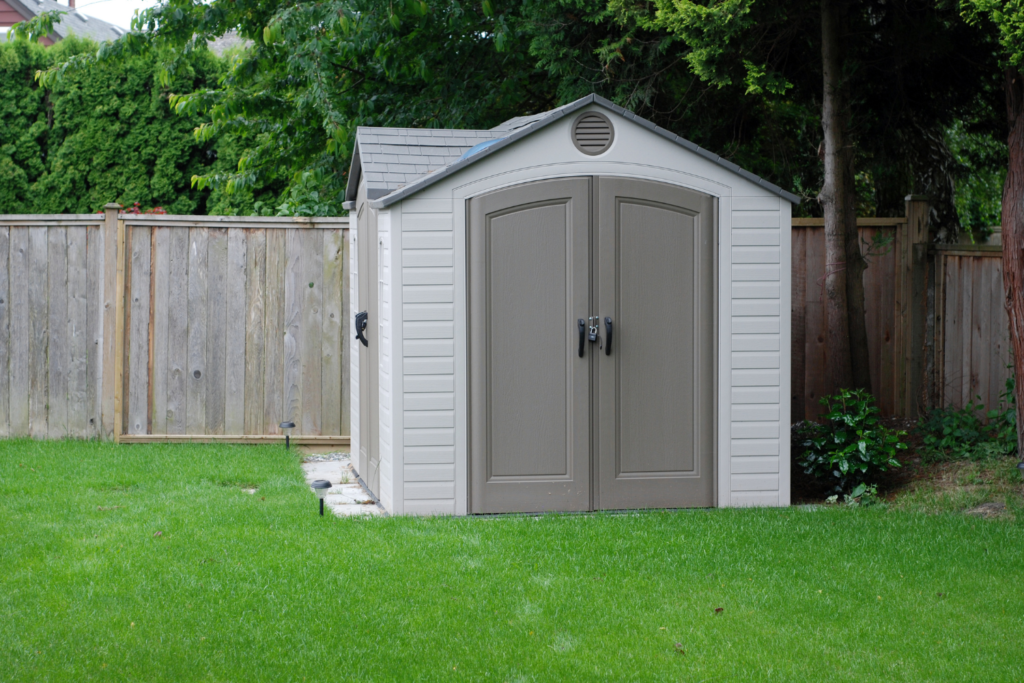
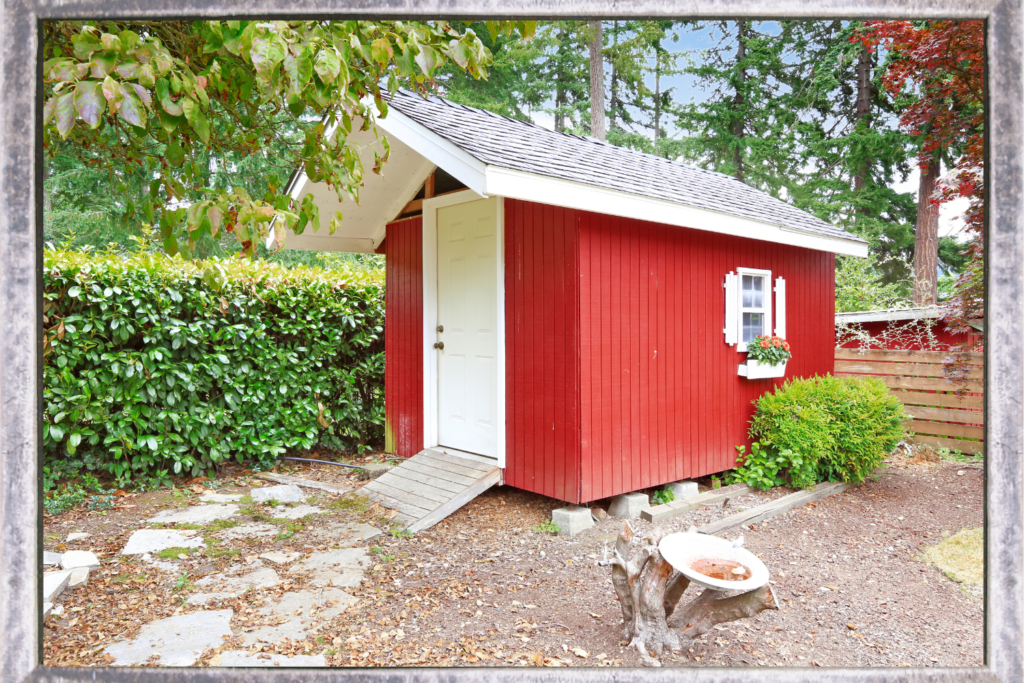
2. Gravel Base:
A gravel base offers a versatile and budget-friendly alternative for shed foundations, providing adequate support while accommodating various terrains and shed sizes. Here’s an in-depth examination of its advantages and limitations:
Pros:
- Cost-Effective Solution: Gravel stands out as a cost-efficient option, presenting a viable alternative to pricier materials like concrete or paving stones, ideal for those working within a constrained budget.
- Excellent Drainage Capability: The permeable nature of gravel facilitates efficient water drainage, mitigating the risk of moisture accumulation beneath the shed and safeguarding against potential structural damage over time.
- Simplified Installation Process: Embracing a hassle-free installation process, gravel eliminates the need for elaborate groundwork, enabling swift deployment and swift readiness for shed placement, saving both time and labor costs.
- Adaptability and Adjustability: With its innate flexibility, a gravel base readily conforms to the contours of the land, accommodating uneven terrain and allowing for easy adjustments or expansions to suit evolving shed requirements.
Cons:
- Susceptibility to Shifting: Despite its utility, gravel may succumb to displacement over time, especially in regions prone to heavy rainfall or freeze-thaw cycles, necessitating periodic re-leveling to maintain a stable foundation for the shed.
- Weed Management Challenges: The porous nature of gravel provides an inviting habitat for weed growth, mandating vigilant upkeep to prevent the proliferation of unwanted vegetation that could encroach upon the shed space.
- Potential Complications with Leveling: Achieving and sustaining a consistently level surface may pose a challenge with gravel foundations, requiring meticulous attention to detail and regular monitoring to counteract any settling or unevenness that may arise.
3. Pressure-Treated Wood Beams:
Utilizing pressure-treated wood beams for shed foundations presents a practical and economical approach, offering a blend of affordability and adaptability. Delve deeper into the merits and drawbacks of this versatile option:
Pros:
- Cost-Effective Investment: Pressure-treated wood beams offer a budget-friendly alternative to more costly materials like concrete or paving stones, making them an attractive option for shed builders mindful of their expenses.
- DIY-Friendly Installation: With basic carpentry skills and tools at hand, homeowners can embark on a DIY journey, constructing a sturdy foundation using pressure-treated wood beams, empowering them to take control of their shed project and potentially save on labor costs.
- Customizable and Versatile: Wood beams afford a degree of flexibility unmatched by rigid materials, allowing for adjustments to accommodate uneven terrain or tailor the foundation dimensions to match specific shed requirements, fostering a personalized touch in shed construction.
- Natural Aesthetic Appeal: Embracing the rustic charm of wood, pressure-treated beams seamlessly blend with the outdoor landscape, lending a warm and inviting ambiance to the shed area that complements the natural surroundings.
Cons:
- Vulnerability to Decay: Despite undergoing pressure treatment to resist moisture and pests, wood remains susceptible to decay over time, necessitating ongoing maintenance and periodic treatments to prolong its lifespan and preserve the structural integrity of the shed foundation.
- Risk of Pest Infestation: The organic nature of wood may attract wood-damaging pests such as termites and carpenter ants, posing a potential threat to the longevity of the foundation and the shed structure if left unchecked, highlighting the importance of proactive pest management measures.
- Maintenance Demands: Unlike inert materials like concrete, wood demands regular upkeep to safeguard against deterioration caused by weathering, moisture exposure, and insect infestation, requiring homeowners to allocate time and resources for inspection, repairs, and protective treatments.
- Limited Longevity: While pressure-treated wood offers enhanced resistance to decay and pests, it may still succumb to the ravages of time and environmental factors, necessitating eventual replacement or reinforcement to sustain the shed foundation’s stability and functionality over the years.
Outsunny 5’x3′ Plastic Garden Shed with Window
FREE SHIPPING
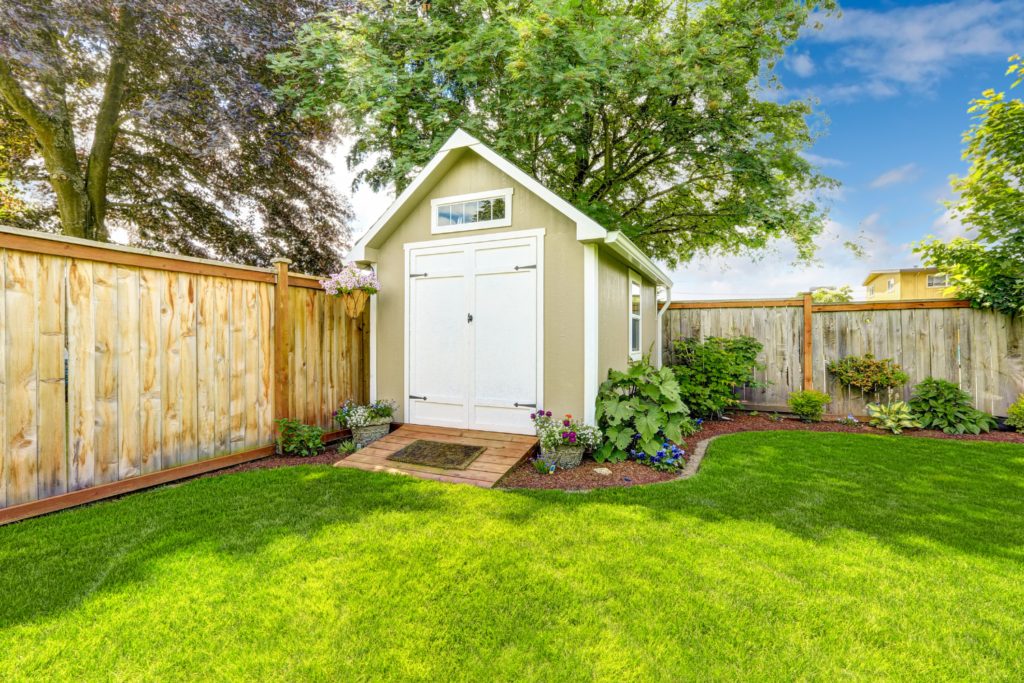
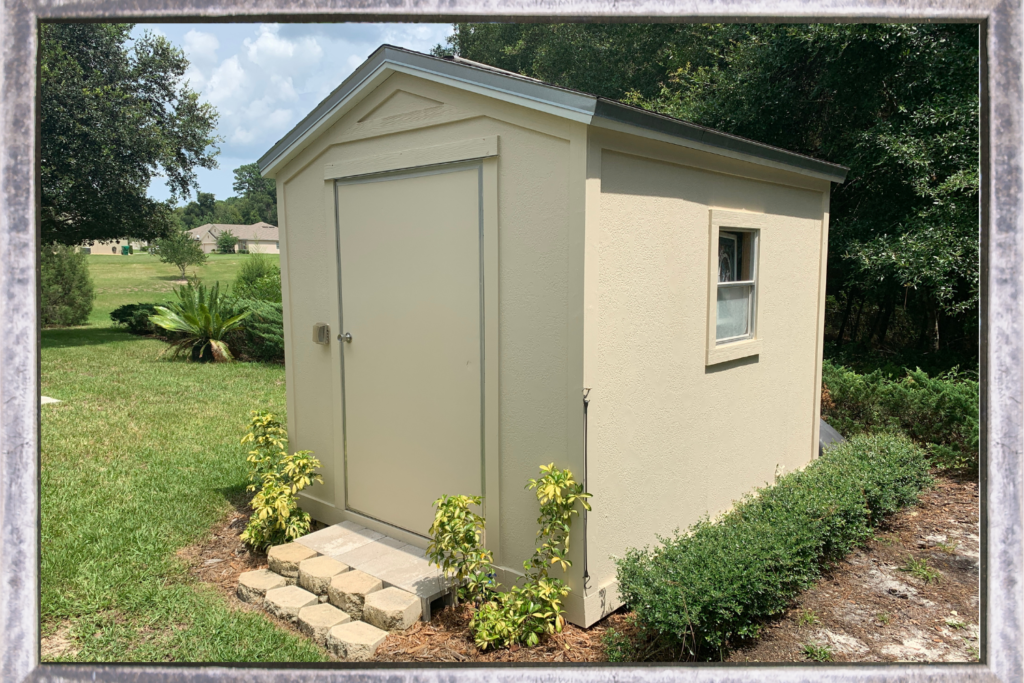
4. Paving Stones or Patio Blocks
Paving stones or patio blocks emerge as aesthetically pleasing and robust options for shed foundations, providing a blend of durability and visual appeal. Here’s a closer examination of their advantages and drawbacks:
Pros:
- Structural Stability: Paving stones and patio blocks offer a solid and reliable foundation, ensuring that your shed remains securely anchored regardless of environmental challenges or shifting terrain.
- Visual Enhancement: With an array of colors, shapes, and patterns available, paving stones and patio blocks elevate the visual aesthetics of your shed area, transforming it into a stylish and inviting outdoor space that complements your home’s architectural design.
- Versatility in Design: The modular nature of paving stones and patio blocks allows for endless design possibilities, enabling you to create intricate layouts or incorporate decorative elements that reflect your unique style preferences and enhance the overall appeal of your backyard oasis.
- Ease of Maintenance: Once installed, paving stones and patio blocks require minimal upkeep, with routine cleaning and occasional weed removal being the primary maintenance tasks, ensuring that your shed foundation retains its pristine appearance with minimal effort.
Cons:
- Initial Cost Investment: While paving stones and patio blocks offer long-term value, their upfront cost may be higher compared to more budget-friendly options like gravel or pressure-treated wood, requiring careful consideration of your budgetary constraints.
- Labor-Intensive Installation: Achieving a professional-quality finish with paving stones or patio blocks may necessitate skilled labor and specialized equipment, particularly for larger shed foundations or intricate designs, potentially adding to the overall project cost.
- Weight Considerations: The substantial weight of paving stones or patio blocks requires a stable and adequately prepared ground surface to support the load, necessitating proper site preparation and grading to prevent settling, sinking, or other structural issues.
- Potential for Surface Irregularities: Despite meticulous installation, paving stones and patio blocks may develop surface irregularities over time due to factors such as soil movement, settling, or frost heave, requiring periodic adjustments or repairs to maintain a level and uniform foundation for your shed.

